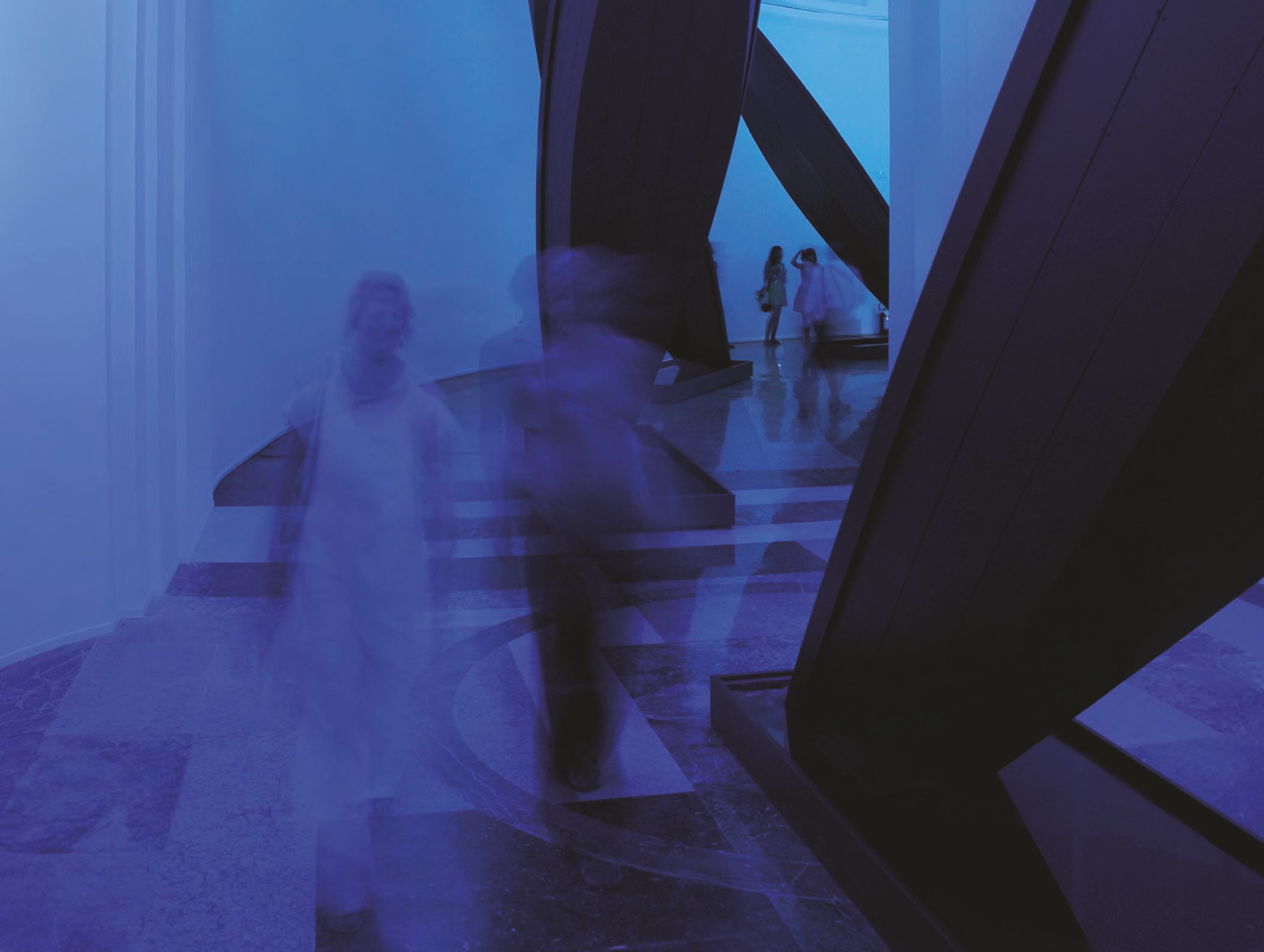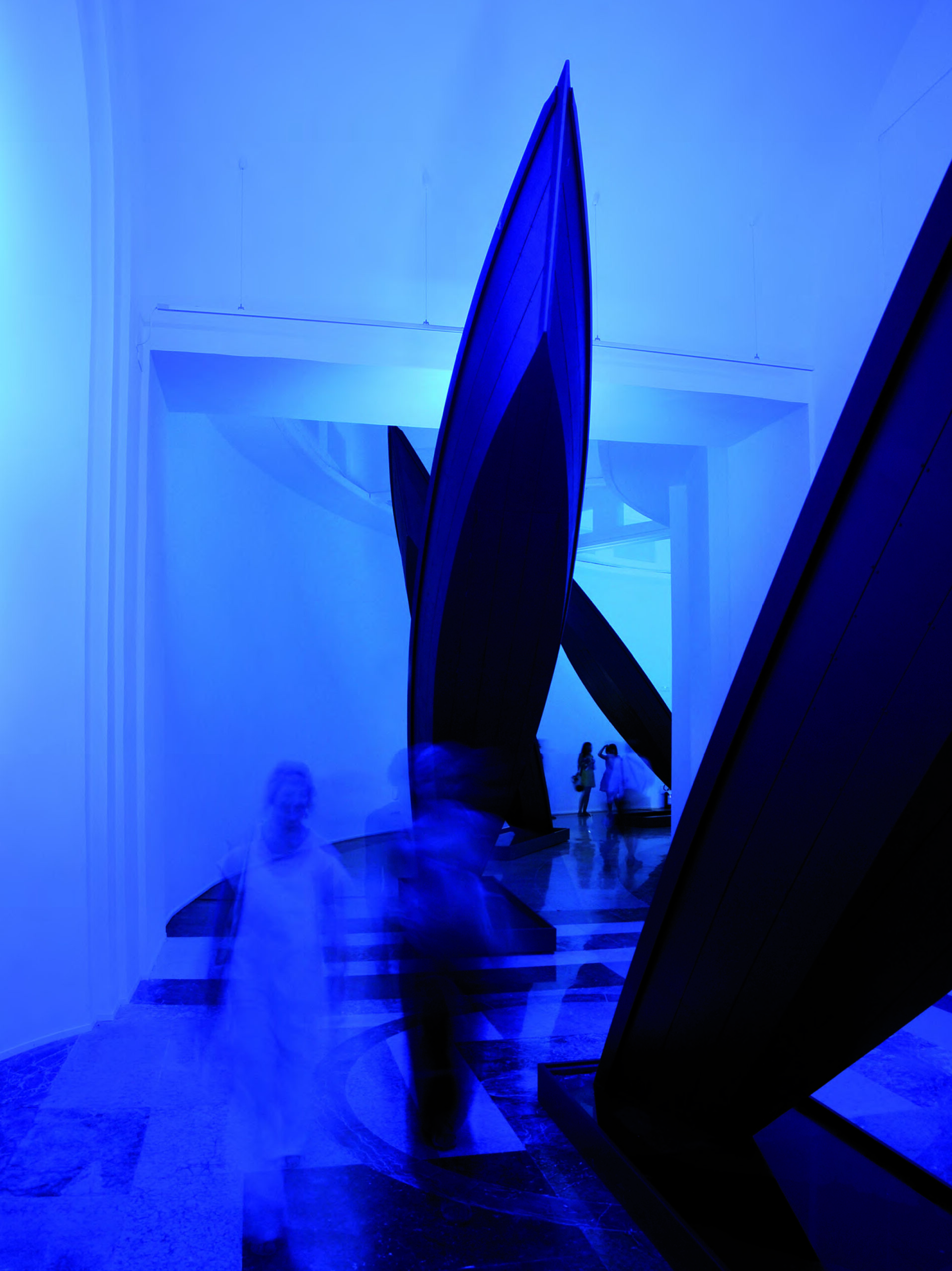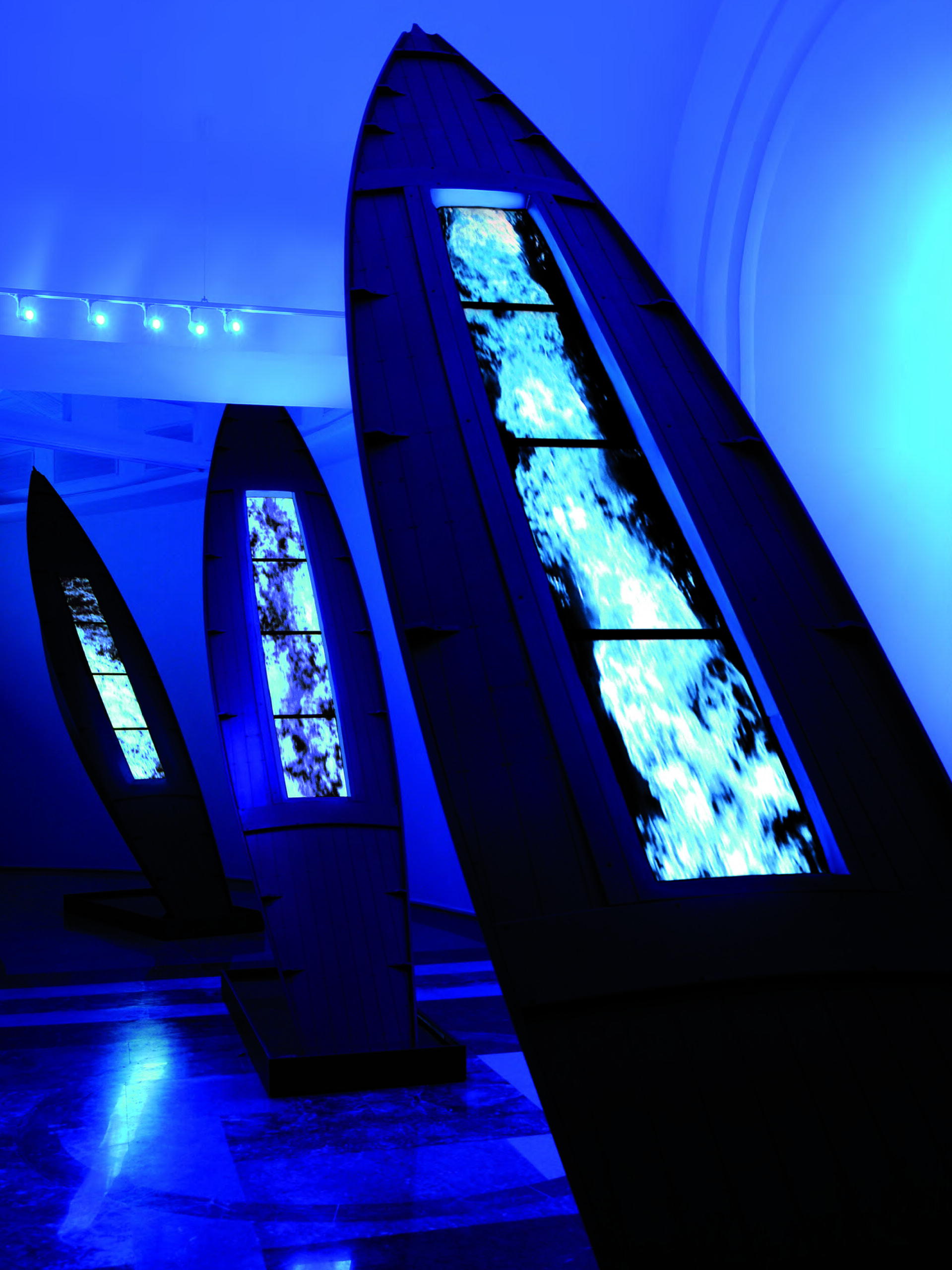Three rooms immersed in total darkness. The world’s oceans projected into six giant screens and a silence interrupted only by the sound of the water. Fabrizio Plessi’s work Vertical Seas (Mari Verticali) was presented in the Venice Pavilion for the 54th Art Biennale and was defined by the artist: «Giant black steel boats emerge vertically from the darkness and invade the entire space that plays host to them. The seas of the world, each enclosed within its own dark keel, stir and crash at our feet, sounds evoking backwash and far-off waves mix and intersect in the diaphanous space of the surrounding environment». Siix boats , each one almost nine meters tall, lightly touch the ceiling and, against the pitch blackness, on screens measuring 4×5 meters, show the movements and light reflections of the water. The work was exhibited only on two other occasions prior to the Venice Pavilion: at the Maddalena and in Dubai.
Standing back to look at Mari Verticali, we get a sense of the challenging, adventurous path that is implicit in the concept underpinning it, but it is also an invitation to travel, with the boats at a dynamic angle of 45° and a pervasive sense of trusting tension. In this way, it is associated with the history of Arzanà Navi, the company that enabled the restoration of the Venice Pavilion and an exhibition partner, together with Louis Vuitton, the owner of the work. Plessi’s video-installation echoes both brands’ passion for the sea and for sailing.
The artist proposed here a new vision of his digital fleet, developed symbiotically within the semi-circular structure of the Venice Pavilion. The route was obligatory, and so the visitors, on entering into a dark space, could perceive only the sound; turning back, though, they could then also see the video, but always with only a partial view of the boats. Curator of the pavilion, Renzo Dubbini; Commissioner, Madile Gambier.
Arzanà Navi has been based at its headquarters in Marghera since 2011. As the then Mayor, Giorgio Orsoni, put it: «I had the opportunity to visit Arzanà Navi at its facility in Marghera, and what struck me most was that in the silence, at what was a particularly difficult time for them, they managed – with determination and a positive, far-sighted vision – to plant an extremely important seed for the Venetian economy». Alberto Peruzzo then stated: «Arzanà Navi views its deep-rootedness in Venice, its relationships with the city’s institutions, and its decision to believe in the local area not just as a potential key for a positive entrepreneurial outcome, but as the raison d’être of its existence». The name Arzanà itself is an homage to the Venetian tradition, since it is the ancient name used in the local dialect for the Arsenale della Serenissima, which was once the largest shipbuilding hub that there had ever been.




